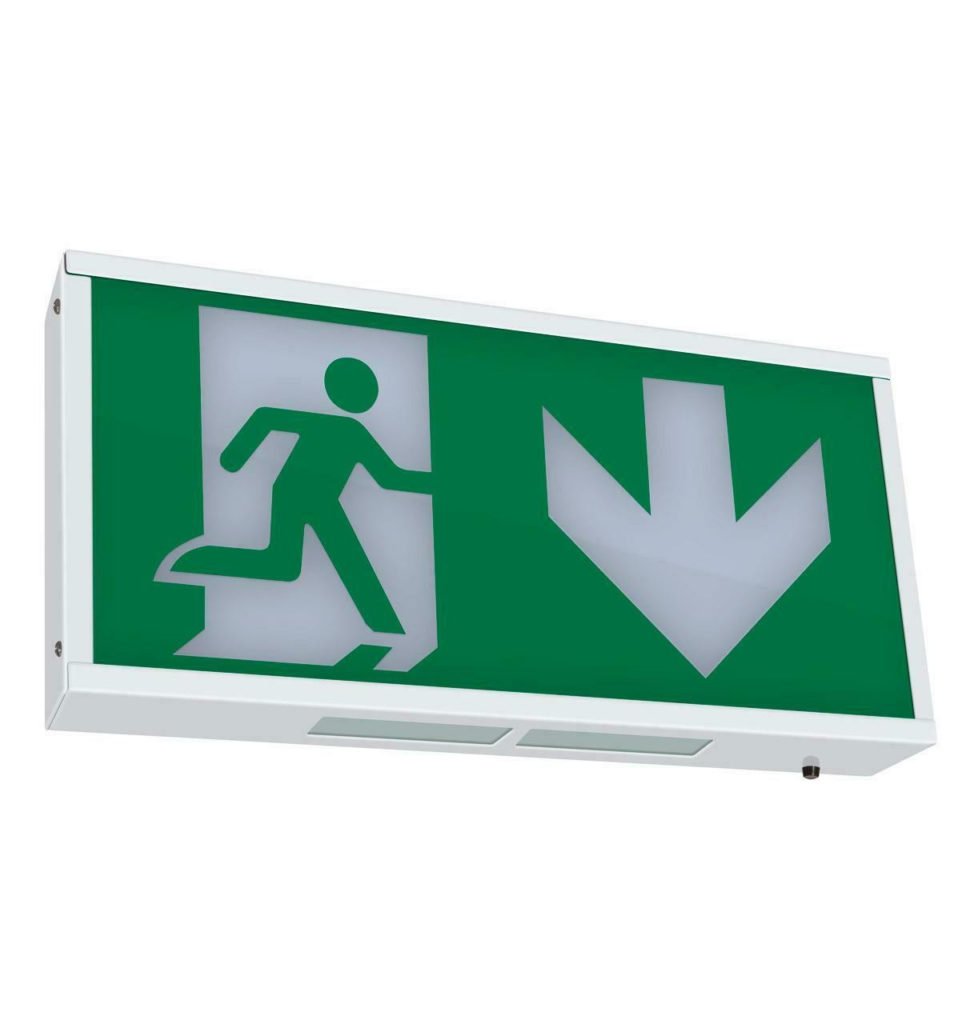Whether it’s through fire, earthquake or someone tripping over a cable, loss of power in a public building can induce panic, hinder escape and ultimately cost lives. Inability to locate an exit can be devastating for a whole number of reasons, from genuine danger to misconceived hysteria.
As such, by law, every building that is designed for public use must be fitted with Emergency Lighting that activates in the event of a power cut (irrespective of the reason) and guides its occupants to the nearest emergency exit. Emergency lighting is generally split into two options, maintained and non-maintained, but what’s the difference, and why should it matter to you?

Non-Maintained Emergency Lighting
Non-maintained emergency lighting exists for one reason – to switch on when a building’s mains power fails. Linked to a battery and the building’s lighting circuitry, these lights remain off while the primary supply is working properly and will only turn on when this is lost. These luminaires exist in many forms, from smaller, lower wattage pin lights that emit just enough light to illuminate exit routes, to illuminated signs that glow in the event of a power cut and identify emergency exits.
This kind of lighting is generally used in environments where the occupants are already familiar with their surroundings such as offices, factories and other work-spaces.
Maintained Emergency Lighting
Maintained emergency lighting does exactly the same as its non-maintained brother, but also doubles as a building’s primary lighting supply. Powered by the mains but also linked to a chargeable battery, it switches to the latter when access to the former is lost. Basically, this is a light that remains on at all times.
This kind of lighting is used in environments where occupants may not necessarily know where they’re going and will need to be guided to the nearest exit via generously illuminated walkways such as shopping centres, cinemas, theatres and other public areas.
So which should I use?
There is no ‘best’ option when it comes to emergency lighting, just that which is more applicable to your uses. For example, lighting a stairwell that exists purely as an exit route with maintained emergency lighting would prove to be a colossal exercise in wastefulness, whilst installing small, LED non-maintained lights in a large public gallery with high ceilings and cavernous rooms would also prove to be a mistake.
Ultimately, as is usually the case with lighting, it’s simply a case of assessing your needs and choosing accordingly, though in this instance I’d offer the following rule of thumb: familiar and small environments = non-maintained lighting, Large, unfamiliar settings = maintained lighting. Of course, it’s not always that simple.

